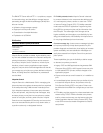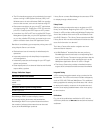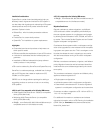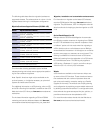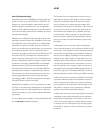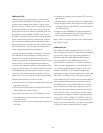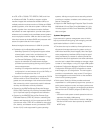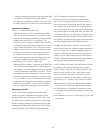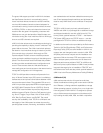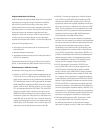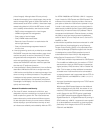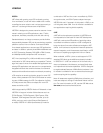89
Engine-based Value Unit Pricing
z/VM V5 introduced engine-based Value Unit Pricing which
replaces the per-engine pricing model that is available
with z/VM V4 as well as providing a lower entry price.
Engine-based Value Unit pricing is designed to provide a
decreasing price curve which may help provide improved
price/performance as hardware capacities and work-
load grow. Value Unit pricing for z/VM V5 can provide for
a lower price per processor engine as more processor
engines are licensed with z/VM V5.1 across the enterprise.
Value Unit Pricing helps you to:
• Add capacity and workload with an incremental and
improved price
• Manage software costs better
• Aggregate licenses acquired across machines that are
part of your enterprise
Engine-base Value Unit Pricing of z/VM V5 should not be
tied to, or associated with, MSU-based Value Unit Pricing.
Enhancements in z/VM V5.1 include:
Virtualization Technology and Linux Enablement
• Support for SCSI FCP disks enable the deployment of a
Linux server farm on z/VM using only SCSI disks. SCSI
disks can be used as such by guests through dedicated
FCP subchannels, and are also supported as emulated
9336 Fixed-Block Architecture (FBA) devices for use by
guests, CMS, and CP. With this support, you can install,
IPL, and operate z/VM from SCSI disks. The z/VM SCSI
support for system disks is based on emulation of the
IBM FB-512 disk architecture and this emulation is also
available for guest use. VM supports an individual emu-
lated FBA disk up to 381 GB in size. However, directory,
paging, and spooling allocations must reside within the
fi rst 64 GB of a CP-formatted volume. Other kinds of CP
allocations may be defi ned beyond the fi rst 64 GB.
• z/VM V5.1 includes the capability to install z/VM both
from a DVD to an ESS SCSI disk emulated as a FBA
device and a 3390 DASD. Installing from a DVD can
signifi cantly reduce the required installation media and
allows you to install to a zSeries server using only SCSI
disks. This is expected to be most benefi cial in a z/VM
environment with Linux guests and without traditional
installation devices such as IBM TotalStorage tape
drives attached to the IBM zSeries server.
• Coordinated near-continuous availability and disaster
recovery for Linux guests by providing a new HyperSwap
function so that the virtual devices associated with one
real disk can be swapped transparently to another.
HyperSwap can be used to switch to secondary disk
storage subsystems mirrored by Peer-to-Peer Remote
Copy (PPRC). HyperSwap is exploited by GDPS 3.1 to
provide a coordinated near-continuous
availability and
disaster recovery solution for distributed applications,
such as WebSphere, that span z/OS images running
natively and Linux guests running under z/VM.
• PCIX Cryptographic Coprocessor (PCIXCC) sup-
port provides z/OS and Linux guest support for the
PCIXCC Feature available with the z990 and z890
severs. Delivery of the z/VM PCIXCC support satisfi es
the Statement
of Direction made on May 13, 2003. z/VM
V5.1 supports the third-generation cryptographic feature,
Crypto Express2, which replaces the PCICA and PCIXCC
features. Crypto Express2 combines the functions of both
PCICA and PCIXCC in one feature providing improved
secure-key operations. Coincident with the availability of
this new cryptographic hardware feature, z/VM V5.1 pro-
vides support for Crypto Express2 clear-key cryptographic
functions for Linux for zSeries guests and clear-key and
secure-key cryptographic functions for z/OS guests.
• The Systems Management APIs, introduced in z/VM
V4.4, provided a basic set of functions that may
be called by applications to allocate and manage
resources for guests running in z/VM virtual machines



